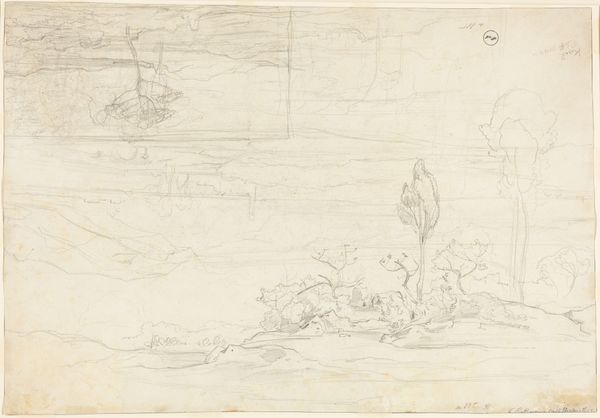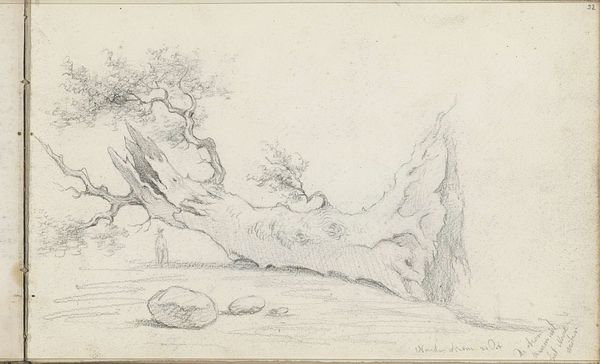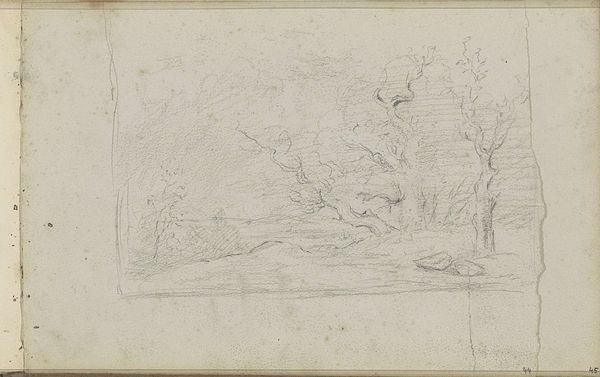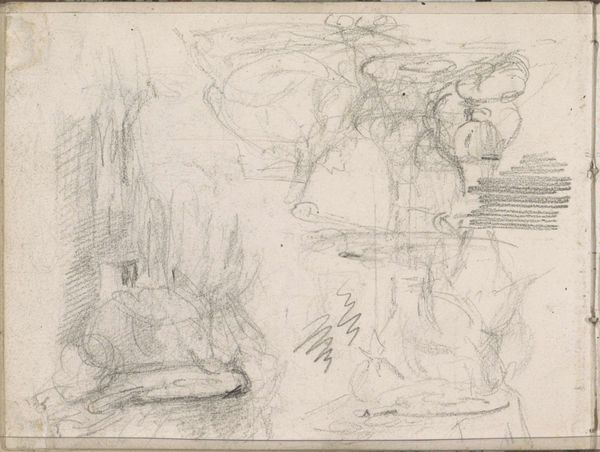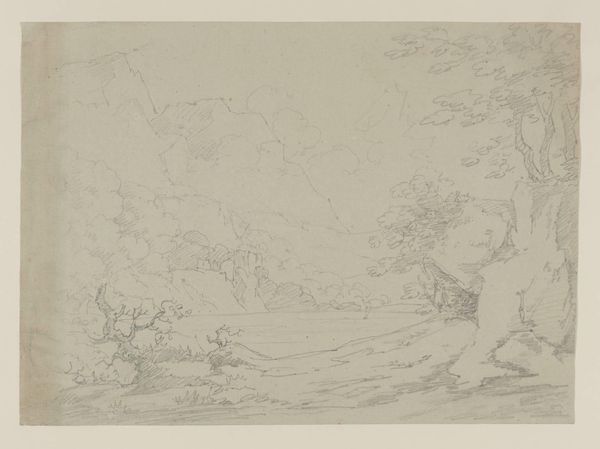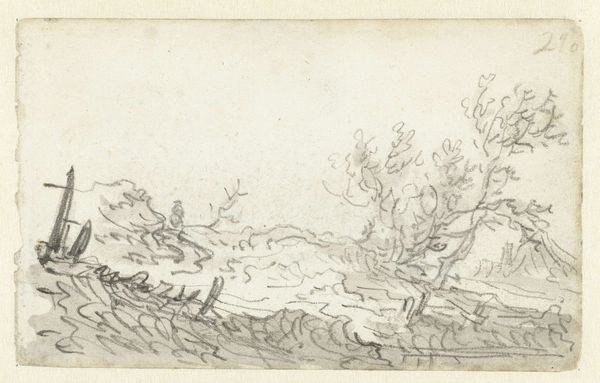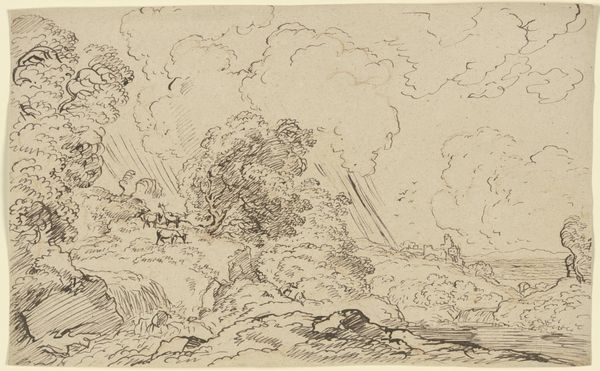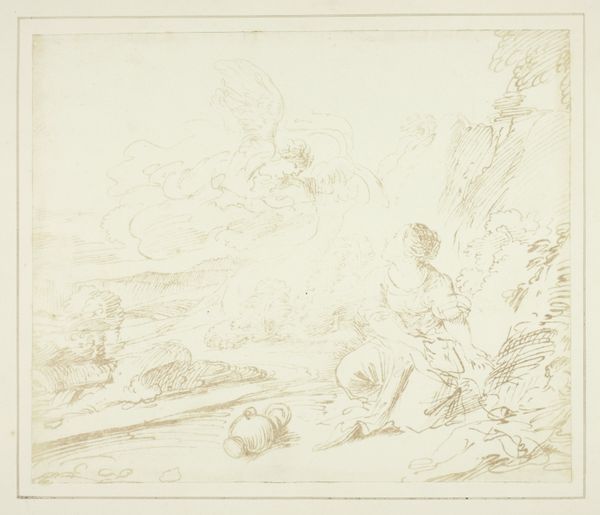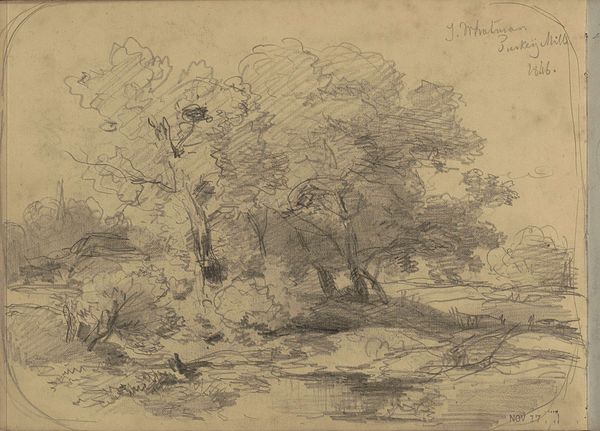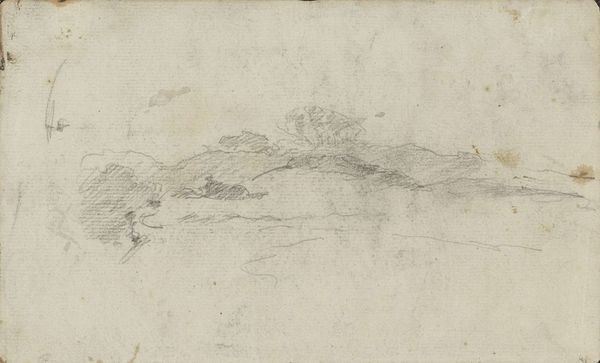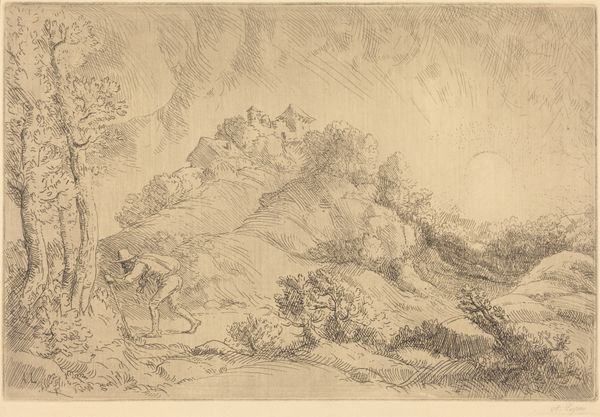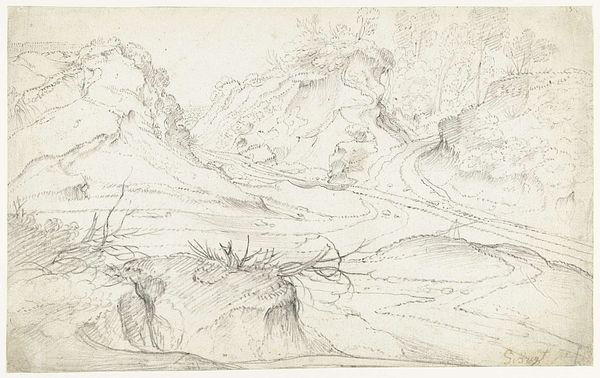
drawing
#
drawing
#
landscape
#
figuration
#
history-painting
Copyright: Public Domain: Artvee
Editor: This is James Ward’s drawing "Elijah Casting off His Mantle." It's, well, sketchy! A whirlwind of horses, clouds, and figures done in pencil. It feels dynamic, but also incomplete. What catches your eye in this work? Curator: Immediately, the iconography. Elijah's story is deeply embedded in cultural memory. Think of the fiery chariot as more than transport; it’s transformation. This isn't just a departure, but a visual metaphor for spiritual ascension. Consider how the “mantle” represents legacy, power, prophecy. How does the act of casting it off change how we read the work? Editor: It seems like a visual passing of the torch...or mantle, I guess! So the rough sketchiness adds to that feeling of transition? Curator: Precisely! Ward uses the visual shorthand of the sketch, an implied speed that mirrors the swiftness of divine intervention. But what does the “incomplete” nature of the work suggest? Editor: Maybe it represents the unending nature of faith, how these stories are continually reinterpreted and passed down? Curator: Excellent. The absence of hard lines makes the viewer work to complete the image, investing in the narrative itself. Elijah leaving the mantle becomes a continuous act across generations, us included. Editor: I never thought of sketchiness as something active, a collaboration with the viewer! That changes how I see preparatory sketches now. Curator: These symbols carry an emotional and cultural weight that persists across time, revealing layers of continuity. Ward's “Elijah” isn't just a scene; it’s an evolving idea.
Comments
No comments
Be the first to comment and join the conversation on the ultimate creative platform.
